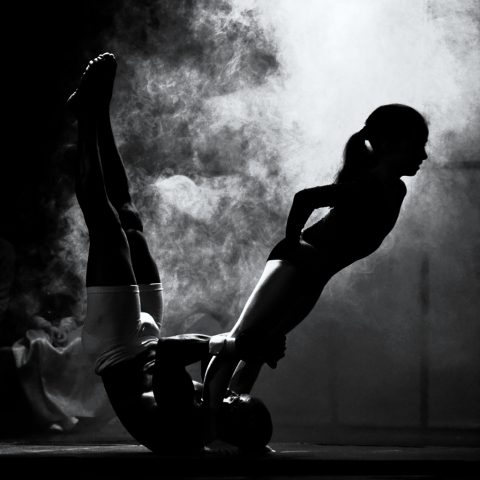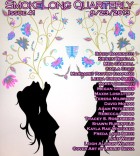I wonder if many of your readers were surprised to learn that there was no Madeline Le Vin, nor a Le Vin Nightingale. Part of me—somewhat selfishly, I suppose—wanted there to be. Where did this idea come from? Had you considered writing it in a form other than flash?
I’m really glad they seemed real to you! I love to play around with historicity in my writing, and anachronism, and with the lines between fact and fiction. The idea for the story came from my friend, who told me a totally different true story of someone being lost at sea; I became excited about that sort of death and wrote a few short pieces where people were lost at sea—of those, this was my favorite. It also, somewhere, must come from the disappearance of Amelia Earhart and her flight engineer, Fred Noonan, although this story is set impossibly early for such a flight. I hope that the implausibility of the flight itself would play off the implausibility of the action (who would carry a victrola in a biplane?). The nightingale came from wikipedia, when I decided I needed a volcano, although it is actually just called the Nightingale Reed Warbler, and was recently discovered not to be extinct, after all.
Your deft management of the downed plane and erupted volcano as intertwined disasters through time and space is one of the many things that surprises and impresses me about this piece. How and at what point in your writing process did the eruption appear?
Thanks so much! I wanted a really spectacular sunset for Madeline and Dusty, and so I needed something to make one; a volcano sounded like a good culprit. Once I started looking for a real volcanic island that might have erupted around this time, I discovered the disappearing and reappearing acts of reed warblers in the Marianas.
In “Common Errors” chapter of The Art of Fiction, Gardner preaches on the dangers of shifting psychic distance, yet you zoom out and in with a catastrophic grace your story earns and demands. It’s breathtaking. Do you employ this technique often in your fiction, and does your work translating between media encourage you to make bold choices in your writing?
Again, thanks so much! I do employ this technique often, but I don’t know that it often works. I don’t have enough discipline to stay in one space and time for too long, and most of my favorite writers zoom around through time and space in their work: Lucy Corin, Jeannette Winterson, Joy Williams, Angela Carter. I can’t say, really, that this was a bold choice for me, only because I didn’t do it consciously. To stay locked into one point of view (say, a close third, or a single first person voice) requires me to constantly choose it. Naturally, I like to wander.
Was there ever a chance Madeline and Dusty would survive?
I don’t think I state that they don’t. I mean, things look bad. Dusty certainly thinks they are done for. The sharks are literally circling. But who knows? I think that’s what’s so exciting about the Gardner Island theory: the idea that Earhart and Noonan did survive, stranded on an island for some time, and just weren’t found. I don’t know enough about the science to know if the theory really holds water; however, I do know that the theory holds the imagination. We want our heroes to die tragically, and nothing is more tragic than thinking of Earhart, faint of voice, calling for help on the radio day after day while everyone searched for her in the wrong place.
How does your work as an editor and a professor inform your writing?
My editorial work is very inspiring, simply because I get to read a lot of great stuff, most often from people I’ve never heard of, and it is so cool to just see what people are doing out there. It gives me energy to write and to send stuff out.
For the last few semesters, I’ve taught a class on myth and fairy tale retellings, and my research has very much informed my work. I found Kate Bernheimer’s essay “Fairy Tale is Form, Form is Fairy Tale” to be very instructive for my own work, especially her analysis of intuitive logic and abstraction in fairy tales and contemporary work, because I’ve never really bought into the old “show, don’t tell” cliché. Part of the excitement of telling, and of abstract image, is that they engage the collaborative nature of fiction, which is ultimately the work of both writer and reader.
Gin is such a dreamy spirit, freighted with so much history and possibility—have you ever chewed on a juniper branch? And is your cocktail of choice gin-based?
I have not chewed on a juniper branch, but I did once chew on a Douglas Fir branch, which was bitter and sappy, and not at all like you’d hope eating a Christmas tree would be. And, after a bit of a rough start with gin, I’ve come to adore it. It says summertime to me, in the same way that smoky whiskeys speak of winter. And I love how both those spirits (what a great word for booze) have so many modes, from illicit bathtub gin and moonshine to single malt scotch and the martini.
Finally, what would you serve us were we to darken your doorstep during cocktail hour?
This is a tough one. It’s hot out right now, so I might lean toward a Gin Smash or a Rickshaw, but since the weather is cooling off, how about that martini? I like a good amount of vermouth, a really clean, crisp gin (my current fave is made near South Bend: Journeyman’s Bilberry Black Heart Gin) and, in lieu of the juniper branch, a sprig of rosemary? I know for sure it tastes better than Douglas Fir.



 The SmokeLong Grand Micro Contest (The Mikey) is now an annual competition celebrating and compensating the best micro fiction and nonfiction online.
The SmokeLong Grand Micro Contest (The Mikey) is now an annual competition celebrating and compensating the best micro fiction and nonfiction online.